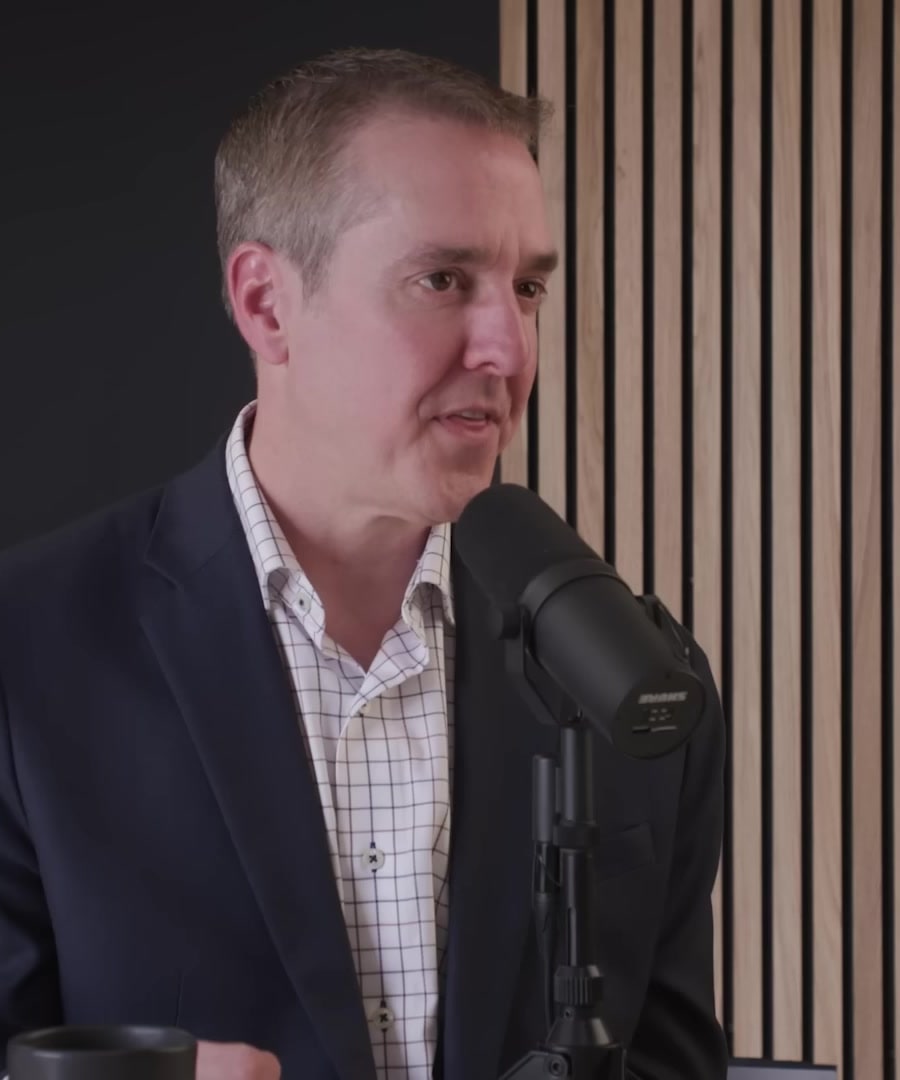How does Marijuana disrupt your sleep?
Sources:
Marijuana, particularly THC (tetrahydrocannabinol), disrupts sleep by affecting the sleep architecture and blocking REM sleep. While it can speed up the onset of non-consciousness, the electrical brainwave signature during falling asleep with THC is not ideal, indicating a non-natural aspect to this sleep. Many people report not remembering dreams while using THC, but experience an intense rebound of vivid dreams when they stop using it. This rebound effect occurs because the brain tries to recapture the REM sleep that was blocked 1.
Furthermore, explains that substances like alcohol and THC that increase serotonin or GABA can disrupt the pattern and depth of sleep, affecting the sequencing between slow-wave sleep and REM sleep 2. THC creates a pressure for REM sleep, building a debt for it, and upon stopping its use, a severe rebound insomnia can occur, which is often part of the clinical withdrawal profile 3.
In addition, THC and CBD from cannabis can outcompete endogenous cannabinoids in the brain due to their higher potency, which can lead to dependence and disrupted brain states 4. Alcohol and THC, while they may help some people fall asleep, they ultimately disrupt sleep architecture, potentially reducing the restorative quality of sleep 5.
Lastly, it is important to note that the use of THC has been shown to impair mitochondrial function, which plays a role in brain aging, memory impairment, and motivational states 6.
RELATED QUESTIONSHow can humans learn to love
Sources:
Learning to love involves engaging with things that stir us emotionally, as emotions play a significant role in our energy and motivation. The neurochemical changes that occur when we experience deep emotional connections are essential for rewiring our brain and behavior. For instance, energy and motivation can be derived from a desire for something or a desire to get away from something negative. Agitation can be a sign of the neurochemicals in the brain that suggest the necessity to adapt, including developing new emotional patterns like love 1.
Moreover, it's interesting to note that the physiological response of alertness looks similar for feelings of love, excitement, anger, and frustration. Nonetheless, love is often associated with the release of serotonin and dopamine, which have a replenishing effect, making it sustainable compared to the draining nature of constantly being fueled by anger or frustration 2.
While there may be moments in one's life where anger can drive us to do our best work or overcome challenges, it's not something one would want to maintain over time. Instead, love and positive emotional engagement can result in meaningful and sustained motivation. Love is indeed powerful, and by fostering it within ourselves and towards others, we create a supportive environment for personal and emotional growth.
RELATED QUESTIONSWays to encourage emotional growth and develop deeper connections.
Encouraging emotional growth and developing deeper connections involve understanding our own emotions and those of others, as well as practicing empathy and communication. Here are some ways discussed by that may help foster emotional growth and deeper connections:
-
Develop Self-Awareness: Recognize and understand your own emotions. Self-awareness helps you understand how you impact others and can lead to better self-regulation 1.
-
Practice Vulnerability: Being open and vulnerable with others can promote trust and closeness. Sharing personal experiences and feelings with someone else can create a deeper emotional connection 2.
-
Emotional Contagion: Spend time with individuals who exhibit the emotional qualities you aspire towards. Emotions can be contagious, and surrounding yourself with positive influences can be beneficial 1.
-
Strengthen Communication Skills: Clear and compassionate communication is key to understanding and being understood. Practice active listening and express yourself in a way that's respectful to others 2.
-
Express Gratitude: Gratitude can strengthen relationships and increase personal well-being. Regularly expressing appreciation for others can facilitate deeper emotional connections 1.
-
Seek Out New Experiences: Sharing new activities with others can create bonds and shared memories that deepen your relationships. These shared experiences can also expose you to different perspectives, fostering empathy and understanding 2.
-
Practice Empathy: Try to understand things from the point of view of others. Empathy helps bridge emotional gaps and leads to more meaningful interactions 1.
Remember to be patient with yourself and others during this process, as emotional growth can be a gradual journey.
RELATED QUESTIONS-
Autism
Sources:
Discussions on the have covered various aspects of autism, with insights from experts such as , Director of Social Neurosciences at Stanford, who spoke in an episode about the causes and treatments for autism. Here's a summary of the key points covered:
-
Autism Spectrum: Autism is a spectrum disorder with varying degrees of severity. Some individuals with autism require full-time care away from home, while others are high-functioning and lead independent lives 1.
-
Understanding Autism: The condition may not always be related to the brain, as initially thought. The relationship between the gut and the brain is also under consideration, and there is no singular "autism" but potentially "autisms" or many forms 2.
-
Early Intervention: Timing is crucial for interventions, and the benefits of early intervention, such as with oxytocin, are being explored. It is essential for autism screening to be available and inexpensive to facilitate such interventions 3.
-
Sensory Issues: Some forms of autism might be linked to hyper-sensitive sensory neurons, as indicated by studies on mouse models mimicking autism. This detail could explain the sensory overload experienced by some individuals with autism 4.
-
Complexity of Diagnosis: Autism remains behaviorally diagnosed. The diversity in its clinical presentation can make it difficult to categorize and address with treatments, and various theories about its environmental influences are being studied 5.
-
Barriers to Diagnosis: The current diagnostic process is time-consuming, and there's a scarcity of trained professionals. More scalable diagnostic methods, such as blood tests or eye gaze analysis, may help identify at-risk children faster 6.
-
Oxytocin's Role: There is interest in understanding the role of oxytocin in autism. Some mouse models and small human studies indicate that blood oxytocin levels might be lower in individuals with autism and may be linked to their social impairments 7.
-
Autism Prevalence Increase: Increased awareness and improved screening have led to earlier diagnoses. However, the current one in 36 US children diagnosed with autism suggests an actual increase. Autism is more prevalent in males with a bias of roughly three to four boys for every girl diagnosed 8.
It is clear from these discussions that autism is complex, with many facets still not fully understood. Ongoing research continues to shed light on the condition's neurobiological underpinnings, potential causes, and variations.
RELATED QUESTIONS-
Autism in adults
Sources:
Autism in adults has been discussed by experts on the , particularly highlighting aspects like social challenges, diagnostic considerations, and therapeutic approaches. Here's a concise summary focusing on autism as it relates to adults:
-
Theory of Mind: Adults with autism may have varying degrees of theory of mind, impacting their ability to attribute or understand the experiences of others without directly experiencing them. The prefrontal cortex, which is responsible for setting context, plays a significant role in this process 1.
-
Continuum of Impact: Autism is often regarded as stable over the lifespan. However, some individuals may outgrow their diagnosis or respond well to behavior therapy, while others may continue to experience significant impacts throughout their life 2.
-
Oxytocin and Social Functioning: Studies have investigated the relationship between oxytocin and social difficulties in autism. Lower blood oxytocin levels were associated with social challenges, not only in children with autism but also in typically developing individuals. This opens up potential avenues for therapy focusing on social function rather than the diagnosis itself 3.
-
Research Limitations: Autism research faces challenges such as the difficulty of accessing brain tissue or cerebrospinal fluid and the limitations of animal models. Additionally, the varying degrees of the condition among individuals can make targeted studies on adults with autism complex 4.
-
Sensitivity and Terminology: Discussions around autism, particularly in adults who can make their own decisions, should respect individual preferences regarding labels and terminology. Adults on the autism spectrum may not wish to be labeled as having a brain illness, and this sensitivity is increasingly being recognized in both scientific and social contexts 5.
-
Focus on Biological Mechanisms: Strides in autism research emphasize the importance of understanding the underlying biological disruptions. For example, vasopressin levels have been studied for their potential role in social functioning, leading to trials where vasopressin administration improved symptoms in children with low social functioning. Research like this could extend to adults with autism and offer new treatment opportunities 6.
As these points illustrate, the experience and challenges faced by adults with autism are complex and multifaceted. Research is ongoing to understand these challenges better and to find effective ways to assist and improve the quality of life for those living with autism.
RELATED QUESTIONS-
What are some therapeutic approaches for adults with autism?
Sources:
In the context of therapeutic approaches for adults with autism, the shared the following insights:
-
Blood Oxytocin and Social Functioning: There was a hypothesis that lower blood oxytocin levels might be a marker of autism, called the oxytocin deficit hypothesis. However, a study led by found that lower oxytocin levels correlated with greater social difficulties in children with autism, their unaffected siblings, and unrelated control children. This suggests that oxytocin might play a broader role in social difficulties, rather than being a specific marker for autism 1.
-
Neuropeptide-Based Trials: By focusing on the challenges in social cognition, behavior, and bonding seen in individuals with autism—both children and adults—the research hints at the idea of targeted treatments based on neuropeptides, like oxytocin. This approach focuses on enhancing social functioning without necessarily targeting the autism diagnosis itself. This could mean administering neuropeptide-related therapies to those identified with deficits in social functioning, possibly leading to improved symptom management 1.
-
Oxytocin Administration Studies: There were early studies involving the administration of a single dose of oxytocin to males with high-functioning autism. These preliminary studies indicated that oxytocin might have potential effects on social behaviors, such as enhancing the ability to pick up on social cues from the eyes or improving social relatedness. The research wielded interest in oxytocin as a potential therapy for autism but also indicated that a lot more work was needed to understand the role these molecules play 2.
These insights suggest that therapy for adults with autism could include targeting neuropeptides like oxytocin that may underlie some of the social difficulties associated with the condition. However, care must be taken in interpreting these results, as research in this area is still very much in development. These therapeutic approaches are informed by ongoing studies aimed at understanding the biological underpinnings of social challenges in autism and should always be guided by professionals in clinical settings.
RELATED QUESTIONS-
Increasing Oxytocin levels
Sources:
According to the , here are some methods that were discussed for potentially increasing oxytocin levels:
-
Vitamin D Supplementation: There is evidence that vitamin D is required for proper production of oxytocin and that supplements might help increase its levels 1.
-
Melatonin: Melatonin may prime the system for slightly increased oxytocin release, although the efficacy and mechanisms are less clear and warrant further investigation 1.
-
MDMA: MDMA causes a massive release of oxytocin, which is a neuropeptide associated with pair bonding and bonding generally. However, it's crucial to note that the context in which oxytocin is discussed here is primarily to illustrate its release as a result of illicit drug use and not as a recommendation for increasing oxytocin levels 2 3.
-
Gut Microbiome Interaction: A fascinating connection exists between the gut microbiome and oxytocin production. Studies on mouse models demonstrate that probiotics can normalize social functioning and increase oxytocin by upregulating gene expression via the vagal pathway from the gut to specific nuclei in the brain that produce oxytocin and vasopressin 4.
It's important to mention that this information should not be taken as medical advice, and it's always recommended to consult with a healthcare provider before making changes to your health regimen. The proper use of supplements and understanding their interactions often requires a healthcare professional's guidance. Additionally, the conversation about MDMA is strictly in the context of its pharmacological effects and not an endorsement of its use.
RELATED QUESTIONS-
How does oxytocin function biologically?
Sources:
Oxytocin functions biologically as a hormone and neuropeptide deeply involved in various social behaviors and physiological processes. It operates on short and long timescales, with immediate effects on specific behaviors and lasting effects through the hormonal system. emphasizes the role of oxytocin in processes including:
-
Social Interaction: It's associated with social recognition, pair bonding, trust, and honestly. The sight or even smell of someone closely associated can trigger oxytocin release, and experimental evidence suggests intranasal oxytocin might increase honesty in communications 1.
-
Reproduction and Parenting: Oxytocin facilitates the milk let-down reflex during lactation, and is involved in uterine contraction and cervical dilation during childbirth. This hormone also contributes to bonding between parents, particularly mothers, and their infants 2.
-
Sexual Responses: Oxytocin is released during sexual activity and orgasm. In women, sexual stimulation and orgasm release oxytocin, whereas in men, sexual stimulation does not typically trigger oxytocin release; however, orgasm induces oxytocin release after a delay 2.
-
Grieving Process: Oxytocin may play a role in the intensity with which individuals experience grief, related to the yearning aspect of the emotion. This observation is informed by animal models, such as prairie voles, which display differences in pair bonding based on oxytocin activity 3.
-
Social Media Interaction: Variations in oxytocin receptors or associated gene polymorphisms might influence the extent to which people engage in social interactions online. A study found that individuals with certain gene variants in the oxytocin system seek out more online social interactions 4.
-
Interfaces with the Amygdala: Administration of oxytocin appears to diminish the amygdala's response to fearful stimuli, suggesting a pro-social effect and a reduced stress response during interactions 5.
-
Substance-Induced Effects: MDMA, a drug explored for various therapeutic uses, can cause a significant increase in oxytocin levels. This increase may contribute to a stronger sense of kinship and connection experienced during and after MDMA use, highlighting oxytocin's powerful role in enhancing bonding even at the autonomic level, independent of cognitive agreement 6.
Oxytocin's roles are diverse and impact both social and biological functions. Its production and effects can be modulated by various stimuli, including interpersonal interactions, sensory experiences, and even synthetic administration, as seen in therapeutic contexts.
RELATED QUESTIONS-
Fall in love with just a voice
Sources:
Falling in love with just a voice is linked to the intimate connections that can be fostered through auditory communication alone. has discussed the profound nature of voice-only interaction. For instance, during discussions on platforms like Clubhouse or Discord, where communities engage in voice-chats, there is a surprising level of intimacy observed, similar to what might be experienced in a get-together with close friends. The voice-only communication can be calming and invite a depth of sharing about personal experiences, in both good and difficult times 1.
Furthermore, in discussing attraction and attachment, talks about the concept of autonomic coordination during intimate exchanges, even when only words are shared and not physical touch. By exchanging narratives, individuals listening to each other may experience autonomic nervous system synchronization. This synchronization can occur when people hear and respond to personal stories, suggesting a physiological basis for the development of deep connections that might be interpreted as falling in love. Even when we listen to a story, engage with a movie, or share tales of our own lives, this potential for our autonomic nervous systems to align with one another is compelling and could explain how a deep connection can form from voice communication alone 2.
The discussion also touches on self-expansion in relationships, where close interactions with significant others can modulate our autonomic arousal, impacting how we perceive and react to others, and potentially making us more closed-off to alternatives when emotionally fulfilled. The healthier one feels about themselves independently, the more stable their potential romantic connections can be, without overly relying on another for self-worth or emotional fulfillment. This ties into how our own autonomic nervous system regulation impacts the formation and stability of relationships 3.
These insights from the Huberman Lab suggest that falling in love with just a voice may involve complex neurobiological processes, centered around emotional and autonomic bonding that can occur even without physical presence or visual cues.
RELATED QUESTIONSExplain autonomic coordination in relationships.
Sources:
Autonomic coordination in relationships refers to the natural synchronization of the autonomic nervous systems between individuals engaging in some level of romantic or intimate interaction. addresses this in the context of romantic relationships, noting that people with similar autonomic tones may find themselves attracted to each other, as this likeness reduces the effort required to synchronize their responses naturally 1.
He explains that exchanges of personal narratives between individuals, even when not involving physical touch, can lead to autonomic synchronization. This can be so compelling that participants in certain studies could feel as if they had fallen in love after a deep conversational engagement, which is thought to involve autonomic coordination. Listening to stories or sharing personal experiences allows autonomic nervous systems to map onto each other, potentially laying the foundation for a connection that mirrors aspects of romantic attachment 2.
Furthermore, the concept of autonomic matching is tied to empathy and revolves around the insula and the prefrontal cortex of the brain. These structures are critical for autonomic matching as they help individuals gauge their own internal state while mirroring or responding to the autonomic clues of another person. This delicate interplay is essentially a coordinated dance of the autonomic nervous systems, which facilitates mutual understanding and connection 3.
Finally, discusses the idea of self-expansion in relationships and how our interactions with others can modulate our autonomic arousal and shape our perceptions of other potential romantic partners. A stable internal representation of oneself can contribute to a stable romantic relationship, suggesting that a strong self-identity and autonomic stability can enhance our ability to form and maintain healthy romantic attachments 4.
Understanding autonomic coordination is not only about physiological matching or synchronization but also encompasses the importance of, and our ability to regulate, our emotional states, thereby enabling us to navigate our relationships more effectively.
RELATED QUESTIONS
How does Marijuana disrupt your sleep?
- RELATED QUESTIONS
How can humans learn to love
- RELATED QUESTIONS
Ways to encourage emotional growth and develop deeper connections.
- RELATED QUESTIONS
Autism
- RELATED QUESTIONS
Autism in adults
- RELATED QUESTIONS
What are some therapeutic approaches for adults with autism?
- RELATED QUESTIONS
Increasing Oxytocin levels
- RELATED QUESTIONS
How does oxytocin function biologically?
- RELATED QUESTIONS
Fall in love with just a voice
- RELATED QUESTIONS
Explain autonomic coordination in relationships.
- RELATED QUESTIONS




































